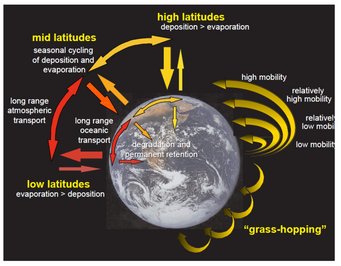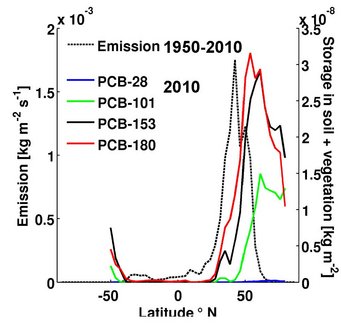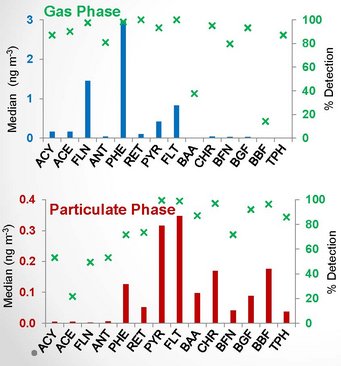Research
Projects
Global and regional scale multicompartment chemistry-transport modelling of PAHs and other SOCs: The global model EMAC builds on an atmospheric general circulation model (ECHAM5). It is extended to a multicompartment model by covering surface mass exchange processes with and storage in soils and seawater. Model simulations provide trace substance levels, compartmental, geographic and vertical distributions, burdens and mass fluxes on large spatial and a wide range of temporal (days to years) scales, characterize persistence and long-range transport potential, and may validate uncertain input data such as physico-chemical substance properties and emissions. Recent and on-going studies focus on the global cycling of PCBs (past, present, future), endosulfan (past, present), the PAH benzo(a)pyrene and nitrated PAHs.
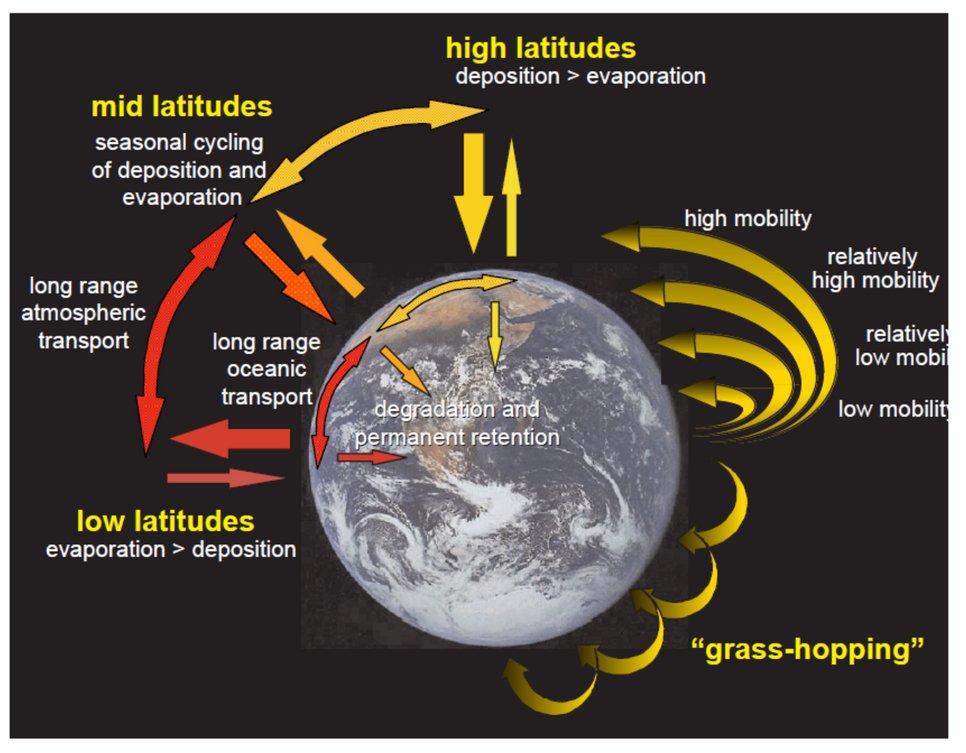
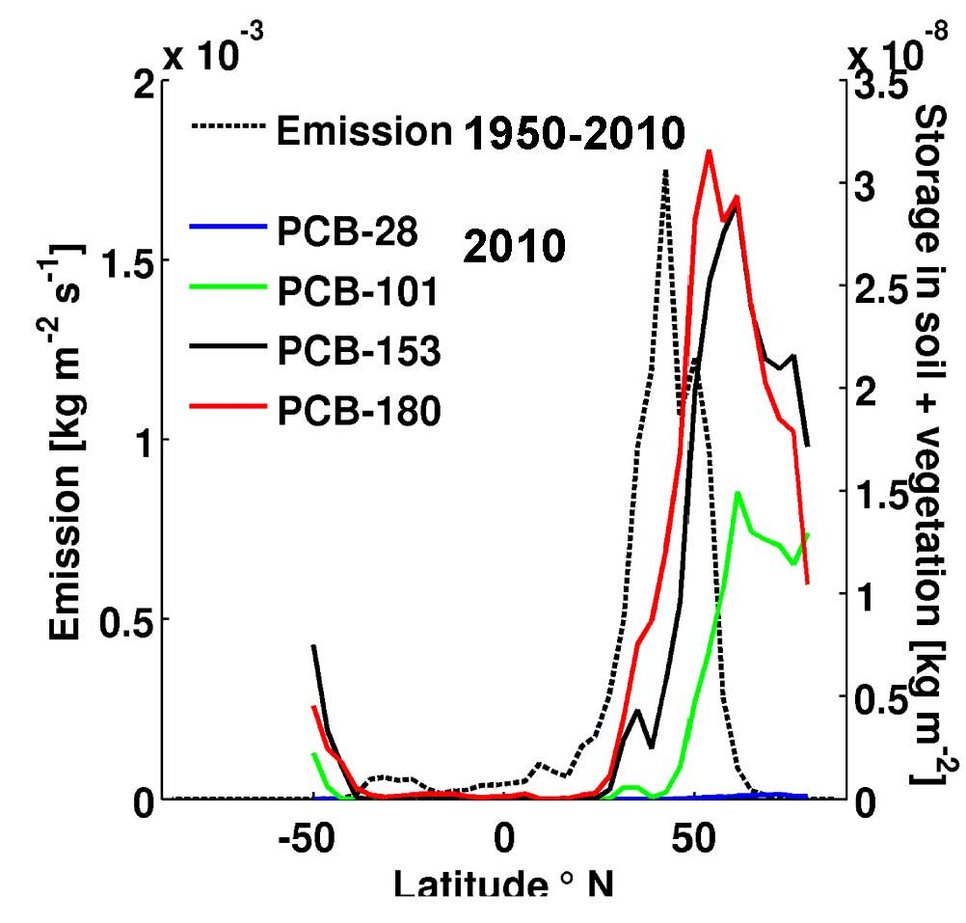
Local-scale processes of halogenated semivolatile organic compounds (SOCs) and polycyclic aromatic compounds (PAHs and derivatives thereof) in atmospheric aerosols: Gas-particle partitioning and air-surface exchange are addressed by air, water and soil sampling and off-line chemical analysis (mostly gas chromatography-mass spectrometry). Based on such field data respective equilibrium or steady state models are tested and improved. Recent and on-going studies focused on air-sea exchange (Mediterranean, Atlantic Ocean) and gas-particle partitioning of PAHs, nitrated and oxygenated PAHs, pesticides and halogenated flame retardants.
Field campaigns: Cycling of Organic Pollutants under the Influence of the Southwest Monsoon (India 2014), Air Quality and Climate Change in the Arabian Basin (AQABA 2017), Ocean Pollution by and Intercontinental Transport of Persistent Organic Pollutants with Trade Winds (ITTWI, Equatorial Atlantic 2017-19)

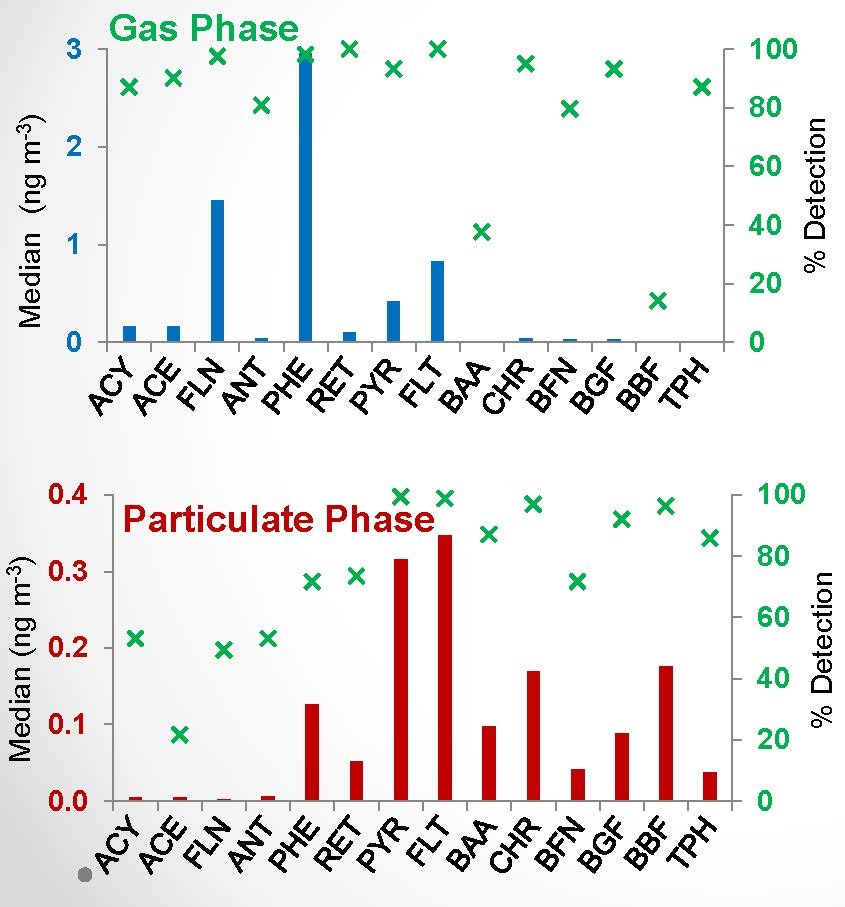
Nitrated and halogenated polyaromatic hydrocarbons in atmospheric matrices (NPAHs, XPAHs): Mutagenicity and toxicity in general of ambient air, at least in Europe, is mostly related to NPAHs and oxy-PAHs, the products of parent PAH atmospheric chemistry. A large part, more than one third of the mutagenic potential of ambient air is attributable to NPAHs. Very little is known about the distributions of NPAHs and XPAHs in the rural and remote environments, their atmospheric fate. Levels, distributions and long-range transport potential are inverstigated. Photochemical formation of NPAHs is studied in field experiments on large spatial scales (cooperating with 1, 3, 6-8, below)
Field campaigns: Air-surface Exchange of Organic Pollutants under the Influence of the Southwest Monsoon (India 2014), Air Quality and Climate Change in the Arabian Basin (AQABA 2017), Ocean Pollution by and Intercontinental Transport of Persistent Organic Pollutants with Trade Winds (ITTWI, Equatorial Atlantic 2017-19)
Determination of the kinetics of the gas-phase reaction of endosulfan and other SOCs with hydroxyl radicals, OH: Using flash photolysis – resonance fluorescence SOCs with vapour pressures as low as 0.01 mPa can be addressed and rate coefficients as low as kOH(2) = 0.3 x 10-12 molec cm-3 s-1 can be determined.
Cooperations
- internal
MPI Chem, Climate Geochem Dept
- external
Masaryk U, RECETOX Centre, Brno/CZ
U Centre Svalbard and U Life Sciences, Dept Chem Biotechnol & Food Sci, Ås/NO
Aristotle U, Environmental Pollution Control Laboratory, Thessaloniki/GR
University of the Chinese Academy of Sciences, Hangzhou Institute of Advanced Studies, Hangzhou /CN
